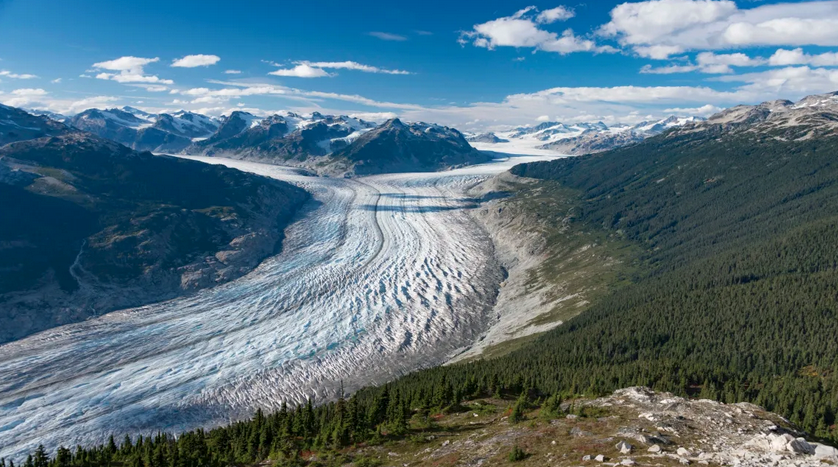Glaciers in Western Canada and Switzerland have been melting at record-setting rates over the past four years, marking the most rapid ice loss ever recorded in those regions, a new study led by a University of Northern British Columbia researcher has found.
The study, published in Geophysical Research Letters, found that glacier melt between 2021 and 2024 doubled compared to the previous decade. The findings show that glaciers in western Canada and the contiguous United States lost about 22.2 gigatonnes of ice per year during that period. Swiss glaciers lost 1.5 gigatonnes annually.
“That’s enough meltwater each year to submerge the entire Toronto metropolitan area under 35 metres of water,” said Brian Menounos, a geography professor at UNBC and lead author of the study.
Menounos called the acceleration in melt rates “unprecedented” even against the backdrop of ongoing global glacier loss. He warned the trend poses major risks for freshwater supplies, landslide hazards, and cultural and tourism values tied to mountain landscapes.
The research team, supported by the Tula Foundation and the Natural Sciences and Engineering Research Council of Canada, used airborne laser altimetry data from the Hakai Airborne Coastal Observatory, along with other datasets and modelling techniques. Contributors included scientists from the Hakai Institute, Natural Resources Canada, Environment and Climate Change Canada, the U.S. Geological Survey and European institutions.
The study attributes the dramatic losses to compounding extreme weather conditions — including low snow accumulation in winter, early-season heat waves, and prolonged warm, dry spells. These factors depleted seasonal snowpacks and exposed darker glacier surfaces that absorb more solar energy, further speeding up the melt.
The researchers also linked glacier darkening to ash from wildfires in Western North America and Saharan dust in Europe, contaminants that reduce the surface reflectivity and amplify melting.
“These feedbacks are not captured in current global glacier models,” Menounos said. “If we’re going to plan for the future, we need better physical models that reflect these real-world processes.”
The findings support previous research suggesting the world has likely passed the point of peak glacier runoff, when meltwater contributions to rivers are at their highest. As glacier volume continues to shrink, streamflow from glaciers is expected to decline in the coming decades.
The Klinaklini Glacier, located on BC’s central coast and the largest in North America outside Alaska, is losing about one gigatonne of water annually.
The study builds on more than 20 years of glacier research by Menounos, who also co-authored a major international glacier assessment released earlier this year.



